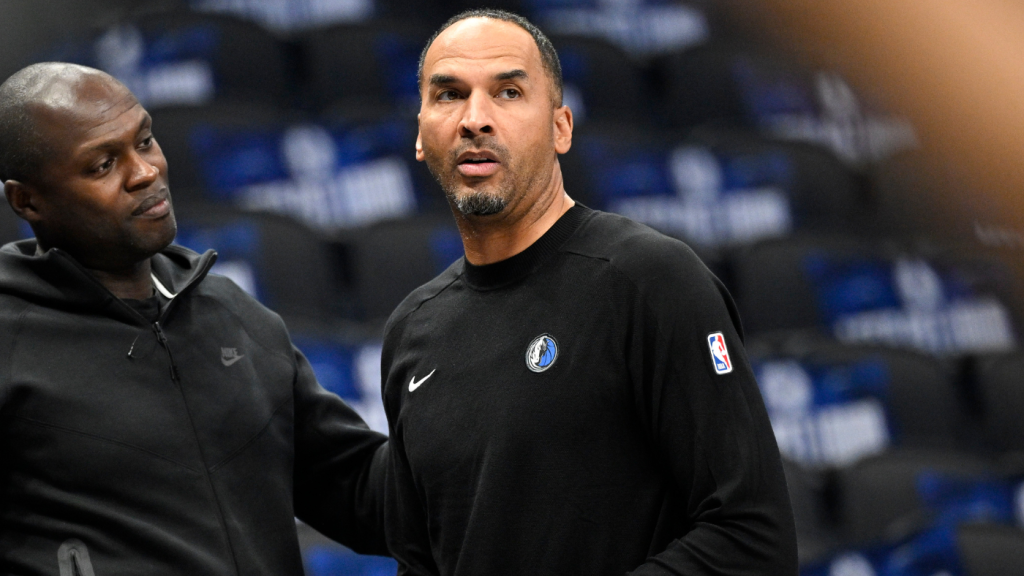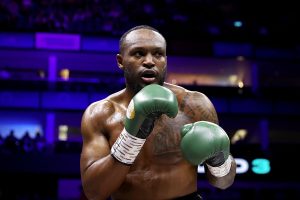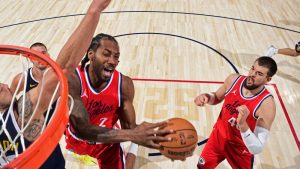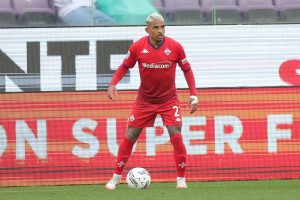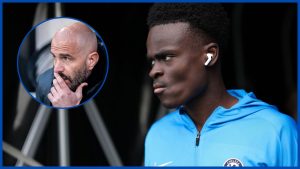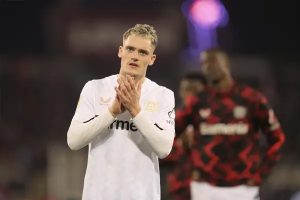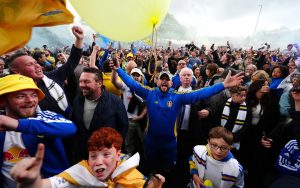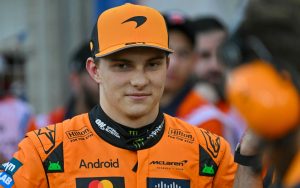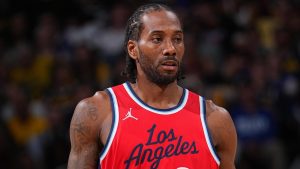What does a win-now offseason look like in Dallas after a tumultuous two-plus months?
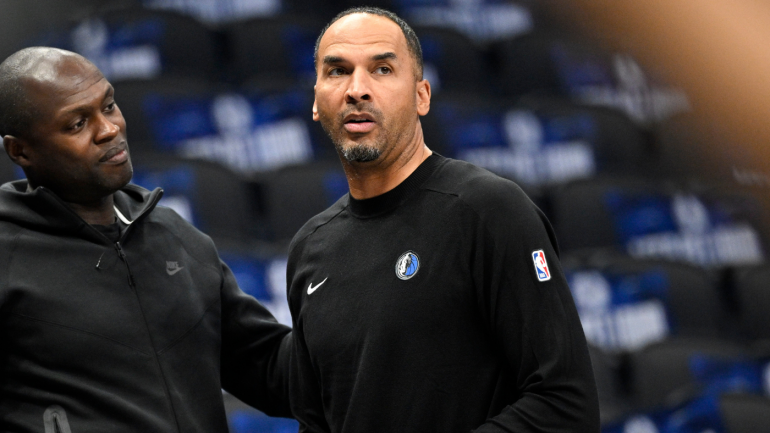
It’s been more than two months since the Luka Dončić trade, but lately, it feels like the Dallas Mavericks can’t go more than a few days without making things worse. Last week, Dallas hosted Dončić and his Los Angeles Lakers for the first time, and the thousands of fans in attendance saw him tear up while watching a tribute video showcasing his best moments as a Maverick. Less than a week later, Nico Harrison delivered one of the strangest press availabilities in recent NBA history, inviting only select media and banning audio and visual recording as he attempted to defend his indefensible trade.
Now, the Mavericks have been eliminated from championship contention with a play-in loss to the Memphis Grizzlies on Friday night. The season from hell has officially ended, but by all accounts, its engineer will not only remain at the helm, but is doubling- and tripling-down on his machinations. “I think once we win, then that will change your mind,” Harrison said at that infamous press conference.
Harrison might be the only person that truly believes the Mavericks are going to win anything any time soon. We’ve covered the reasons why they probably won’t extensively. In truth, the best thing the Mavericks could do right now would probably be to fire everyone involved in what is already looking like the worst trade in NBA history, apologize to the fan base it has insulted and move into something resembling a rebuild. That’s what most outside observers would probably reccommend.
But outside observers aren’t running the Dallas Mavericks. Harrison is, and he’s determined to see this farce through. So now, the Mavericks enter what has become one of the most important offseasons in franchise history ostensibly planning to operate as an all-in, win-now franchise in a loaded Western Conference with their second-best player coming off of a torn ACL. How exactly is this going to work? What kinds of players are they going to target? And is there any hope that the Mavericks can really win their way out of this mess?

What do the Mavericks have, and what do they need?
Virtually everyone on the roster for Dallas this season is under contract next year. At present, they owed a bit more than $146 million in salaries to 11 players: Anthony Davis, Klay Thompson, P.J. Washington, Daniel Gafford, Caleb Martin, Naji Marshall, Max Christie, Dereck Lively, Dwight Powell, Olivier Maxence-Prosper and Jaden Hardy. Brandon Williams, a two-way player recently promoted to a standard contract, is almost certainly coming back as well. They will have Early Bird Rights on Danté Exum and Non-Bird Rights on Spencer Dinwiddie, so both are theoretically retainable. In other ways, they start from a position in which they should at least be able to keep the players they have.
We obviously haven’t mentioned one very important name: Kyrie Irving. The Irving situation is complicated. He has a player option worth roughly $44 million. If he picks that option up, their team salary bolts up to around $190 million. That would already be above the projected luxury tax line, and with Exum and/or Dinwiddie retained and a lottery pick incoming, possibly even up to the first apron.
From that perspective, a longer-term arrangement similar to the one Rudy Gobert made with the Minnesota Timberwolves makes sense here. Gobert declined his 2025-26 player option, which would have come at his super max price, to re-sign on a three-year, $110 million deal that lowered his annual cap figure. In other words, he traded short-term salary for long-term security. Irving, come off a torn ACL, should probably do the same, especially in an offseason with limited available cap space. So expect Irving to opt out and re-sign for multiple years at a figure that gives the Mavericks a bit of room to breathe under the tax line and, more importantly, the aprons.
So that leaves Dallas at roughly the luxury tax line with a basically full roster. What about their pick situation? It’s actually pretty straightforward. Dallas does not control its picks from 2027 through 2030. Because that 2027 pick is owed outright to Charlotte, the Stepien Rule prevents them from trading their 2026 selection outright, but they can swap it. However, their 2025 pick will be tradable. So will either their 2031 or 2032 pick, with the other movable through swap rights, and the 2029 pick they got back from the Lakers could be moved as well. If they absolutely need to sweeten the pot, the 2027 pick owed to Charlotte is top-2 protected. Technically, that means they could trade the pick a second time, with the stipulation that it only goes out if it lands at No. 1 or No. 2.
So that’s three tradable unprotected first-rounders, two unprotected sets of swap rights, and if absolutely necessary, the small fraction of their 2027 pick that remains. Not a bad amount of movable draft capital, especially when the Mavericks have a fair number of veteran players that range from “neutral-value salary filler” to “genuinely valuable trade assets.” They things to trade with. The question, then, is what they need.
The obvious answer here is shot-creation. With Irving injured and Dinwiddie not yet under contract, the best remaining ball-handler on the roster is probably Jaden Hardy, who has never averaged even nine points per game. Someone on this team needs to be able to generate offense in the half court, and if that player isn’t a point guard, they probably need to find a point guard elsewhere. Remember, the plan here is presumably to play Anthony Davis at power forward alongside a center that doesn’t shoot 3-pointers. The shooting everywhere else needs to be stout for this to make sense. Among the existing role players, it mostly is. They just need dribblers to actually create those shots for them.
The Kevin Durant-sized elephant in the room
The Mavericks need offense. Durant is one of the best offensive players of all time, and he’s going to be available. He played with Kyrie Irving in Brooklyn. So, do we have a fit here? The answer, even before wondering if Durant would have any misgivings about a reunion with Irving after the way their last partnership ended, is probably no. Most of the reporting, at least thus far, has suggested that Dallas is not a likely Durant team.
The biggest reason why is salary. Durant will make nearly $55 million next season. Matching salary on a contract of that size without including a similar contract—like Irving’s or Davis’—requires intense aggregation. Outside of those two stars, every Maverick will make less than $17 million next season. That means a deal would require at least three, but likely four important rotation players. Critically, Dallas would likely need to send out more money than it takes in to acquire Durant, because bringing back more money than you send out in a trade triggers a first-apron hard cap. That probably isn’t palatable for Dallas right now, which means a third team is either getting an asset for nothing or getting paid to take on some money.
So let’s imagine a Durant trade. The Suns need a center. So long Daniel Gafford. They’d need a wing to replace Durant. Bye, bye, P.J. Washington. Together, the two make only around $28.5 million, so we’ve got a long way to go to match money here. This means Klay Thompson and his $16.7 million salary are Phoenix-bound as well. That still leaves us about $10 million short of the money needed to duck the second apron, so let’s say Caleb Martin is headed elsewhere as well, along with a couple of first-round picks to satisfy Phoenix.
That leaves Dallas with Davis and Lively in the front court, Durant at forward, Irving nursing an injury, and a group of role players built around Marshall, Christie and some of the younger guys. If everything broke right, which obviously is no given considering the injury histories of some of these players, this group could possibly contend. But already, there’s a major issue here: we haven’t replaced Irving at point guard for at least the beginning portion of next season. Christie and Marshall are your best perimeter defenders. Neither of them are expendable on a team with two expensive veterans in their 30s playing major minutes. Could you maybe scrounge together enough money with Hardy, Powell and Maxence-Prosper to get an innings eater? That’s less clear, but it’s probably costing another pick at least.
In other words, a Durant pursuit saps you of most of your depth and quite a bit of your leftover draft capital. It leaves you with the sort of top-heavy salary structure that has so plagued Phoenix, Milwaukee and Philadelphia lately. And even if those are solvable problems, it means building around a 32-year-old, a 33-year-old and a 37-year-old, all of whom carry significant health risks. Your best-case scenario there is a pretty brief window. More likely, Irving’s injury takes next year off of the table, and you’re starting in earnest in 2026, when Durant is 38. Not exactly high odds.
And then there’s the matter of the fit itself. Part of what made Durant and Irving work so well together in Brooklyn is that the third star—James Harden—was an elite passer. They didn’t have to be. Most of the surrounding role players, like Seth Curry and Joe Harris, were killer 3-point shooters. Here, they’d be more hit-or-miss, and they’d often play with two big men. Durant doesn’t really get to the basket anymore. Irving will be coming off of an ACL. How much diversity they’ll still have offensively isn’t clear. There’s a chance this is just Phoenix with far better big men. That’s a very good team. It’s not exactly a guaranteed champion. There would be holes on this roster before even considering the injury and age risks at play.
So the reported Durant hesitance makes sense. If they’re pursuing a star, it should probably be someone younger and healthier, and it should probably be someone whose offensive skill set gears more towards creation than shotmaking, as Irving theoretically has you covered on that end. So if not Durant, where does Dallas look?
Who else makes any sort of sense for Dallas?
You can probably rule out anyone in Durant’s salary range for the reasons we covered above. Any stars younger than him would probably cost too much from an asset perspective. If, say, Devin Booker became available, Dallas would have no chance in a bidding war against Houston. So we’re probably looking at sub-max-salary guards to potentially tide Dallas over until Irving can make it back. They have a reasonable asset base here, so they should have access to almost anyone that could hit the trade market here. So who might that be?
- The Pelicans are probably going to retool a bit, so why not ask about C.J. McCollum? He wouldn’t cost much in terms of assets given his age and salary (nearly $31 million next season), and he’s coming off of another strong offensive season. He and Irving wouldn’t fit together defensively, but if they’re staggered, they can coexist on a roster.
- Jordan Poole doesn’t exactly fit Harrison’s “defense wins championships” ethos, but he’s made it through a four-round postseason without getting killed for his defense, and he quietly just had a nice bounce back season in Washington.
- Anfernee Simons has been miscast as a lead ball-handler in Portland… but a secondary guard on a Dallas team with big men who can create? That fit makes a lot more sense. His defense is major concern, especially next to a post-ACL Irving, but he could tide the offense over until he gets back and then fit nicely alongside Irving leading it afterwards.
- Collin Sexton has been available at the last few trade deadlines. He’s grown quite a bit offensively in Utah and isn’t quite the ball hog he once was, but he’s not a traditional point guard, either, so the passing would still be a bit light. He’s never put it together defensively, but he was a great defender in college and has the tools to do so in the NBA. This could be a defensive reclamation project for the Mavericks.
- Call the Rockets about Reed Sheppard. They probably aren’t willing to trade him after one underwhelming season, but his shooting makes a ton of sense on such a big team, and while he isn’t ever going to be a particularly good on-ball defender, he posted historic steal numbers at Kentucky. A defense this talented could take advantage of that. Again, he probably isn’t available, but it’s worth the call.
- Speaking of highly-drafted players on rookie deals, Benedict Mathurin is worth a call as well. He’s extension-eligible after the season, and the Pacers already owe max money to Tyrese Haliburton and Pascal Siakam. After paying Andrew Nembhard last summer, it’s hard to imagine them ponying up for Myles Turner and Mathurin. The talent is obviously here, he’s just never had an especially high-usage role. Dallas could give him one earlier next season and see what happens.
- The past few seasons have proven that D’Angelo Russell just won’t have much of a market in free agency. Teams don’t want to pay for regular-season innings eaters who aren’t playoff-viable. That sort of player makes plenty of sense for Dallas though because the name of the game here is going to be “survive until Kyrie gets back.” If Dallas can carve out enough space to dip into their non-taxpayer mid-level exception, he’s very gettable.
At this price point, we’re mostly talking about older players on shorter timelines, younger ones with something to prove, or prime players with some meaningful flaw. The Mavericks, remember, think they already had a winner. They’re not necessarily looking for someone to completely change their outlook. They just need someone to hold down the fort until Irving makes it back, at least in their minds.
The next question here is which veteran or veterans would serve as matching salary in a smaller move like this. There’s an easy answer, but a somewhat surprising one: Klay Thompson. Offensively, Thompson mostly came as advertised this season. The issues come on defense, which are apparently the priority in Dallas. Thompson can no longer defend guards. That’s not eliminating as a useful defensive player, it just means that Thompson has to defend bigger opponents. Well, how can he do that on this, specific roster? The Mavericks are built to use Davis at power forward, not center, so Thompson can’t guard power forwards as he often did this year. He’s not quick enough for small forwards anymore, and besides, Washington and Marshall already guard them. There’s just not an obvious place to put him on defense anymore.
Losing Thompson means losing quite a bit of shooting. Hopefully, they’d get some back in this sort of deal. A Thompson-plus-stuff for McCollum trade would make sense in this regard. It would essentially amount to the Mavericks trading a slight shooting downgrade for a meaningful creation upgrade. The issue here is that Thompson makes only a bit more than half of what McCollum does. The Mavericks would have to close that gap with other players on the roster, perhaps even the $4 million salary owed to Dwight Powell, the longest-tenured player on the team and a locker room staple. Some of the other players listed above would come in at a cheaper price and require less sacrifice. Some move in this vein, though, is probably a necessity. The Mavericks simply don’t have enough players on their roster who can dribble to survive half of a season without Irving, much less an entire year.
So… is this getting any better?
Better? Maybe. It’s hard to imagine things getting worse here, after all. It would be reasonable to expect healthier role players next season, and a healthier Davis season as well. But the notion that winning in Dallas is as inevitable as Harrison seems to think it is feels pretty farfetched for several reasons.
Harrison has traded for two aging, historically injury-prone players in Irving and Davis. He can’t be surprised that they’ve already gotten hurt, and he also can’t depend on them staying healthy once they recover from the injuries ailing them now. This is part of why the three-or-four year window Harrison keeps citing is so bizarre. Aside from the fact that Irving’s injury has already cut into it, the entire concept came at the expense of a window that could’ve last a decade. It only takes a few things going wrong for three or four years to get wasted. Dončić provided much greater insurance against year-to-year injury variance. It’s easier to stay healthy one time out of 10 than one time out of four.
There are also finances to consider here. The bulk of the Dallas roster is under contract for the 2025-26 season, but that campaign has already been compromised by Irving’s torn ACL. The first season that they could possibly enter at full strength is the 2026-27 league year. The problem there is that Gafford and Washington aren’t under contract at that point. Both will presumably be due healthy raises. Another big one is coming for Lively ahead of the 2027-28 season. The Mavericks are far from cheap at the moment, but they’re at least affordable. We’re in apron world. Keeping a deep group of role players together, especially younger ones, just isn’t plausible anymore. By the time Irving is healthy, it’s possible that Dallas has already shed talent for financial reasons.
But most of all, I think we need to interrogate the manner in which Davis is being used here. Davis wants to play power forward. The Mavericks have a roster designed for Davis to play power forward. He won a championship playing power forward. But there are a lot of misconceptions about the “Davis at power forward” narrative that need to be cleared up:
- Yes, Davis played power forward for the 2019-20 Lakers, but was that his best position? Certainly not statistically. The 2020 Lakers outscored opponents by 5.3 points per 100 possessions with Davis at power forward and 5.4 points per 100 possessions with Davis at center, according to Cleaning the Glass. Interestingly, the Lakers were better defensively with Davis at center, despite the narrative that he and another big man automatically produces a great defense. Those Davis-at-center lineups just shot quite poorly. In the playoffs, they didn’t. Davis-at-center lineups outscored opponents by 15.3 points per 100 possessions in the bubble postseason. In those same games, their net rating was +8.3 with him at power forward. That’s the difference between very good and great. That was more or less what happened in the 2021 regular season. They were +5.1 with Davis at power forward and +16.9 with him at center.
- Part of the argument for playing Davis at power forward is that you can accept inferior performance if it means he stays healthy. If that were true, it would be worth considering. But it isn’t. In his first three seasons in New Orleans, he played 66% of his minutes at power forward, according to basketball-reference. He missed 47 games. In his next three seasons, he played 57% of his minutes at center. He missed 35 games. He was almost exclusively a center in his final season as a Pelican, and he did miss 26 games… but only nine of them came before his trade demand. He stayed healthy playing power forward for the 2020 Lakers. However, he played 91% of his minutes at power forward in 2021, but still missed half of the season. Injuries persisted for the next several years as he transitioned to a full-time center, but last season, he played 97% of his minutes at center and missed only six games. Davis might believe playing power forward keeps him healthy, but historically that hasn’t proven to be the case. Sure enough, he was playing power forward when he got hurt in his Dallas debut.
- Something that gets lost in the twin towers narrative of those 2020 Lakers is that Rob Pelinka didn’t have to invest significant resources into the center position. Dwight Howard was on a minimum contract. JaVale McGee was earning only slightly more at $4 million. Yes, the Lakers had two usable centers, but they also had all of their other resources at their disposal to devote to other needed skills. The Mavericks spent a lottery pick on Lively and gave up a first-round pick to get Gafford and pay him meaningful money. For the Lakers, the centers were a luxury. For Dallas, they are a necessity that impact their ability to fill out the rest of their roster. Also relevant: the 2020 Lakers had LeBron James. All of the spacing problems that come from playing two traditional big men? Yea, having arguably the greatest player of all time around helps solve them. The Mavericks don’t have a four-time MVP to overcome the drawbacks those lineups present.
- Finally, the 2020 postseason was an anomaly for Davis. He shot 38% on 3-pointers when he he is a career 31% shooter. More importantly, he shot 49.6% on mid-range jumpers, and he took more of them per game in that postseason than either Chris Paul or Kawhi Leonard. Since then, he’s down to 38.7%. So the notion that you can win a championship with two non-shooting big men if one of those big men is Davis is basically a lie. Davis wasn’t a non-shooting big man when he won a championship, but that was the only time in his entire career in which that was the case. We don’t know how the Lakers would have fared in the bubble if Davis had shot to his norms. We can say that the likelihood is that Dallas won’t ever get the bubble version of Davis as a shooter in any of their own hypothetical postseason runs with him because no other Davis team has before or since.
So put aside the anger and confusion of the Dončić trade for a moment. Completely independently of how we’ve got here, the Mavericks ultimately have a team that’s built on, at best, half truths. The basic premise doesn’t stand up to scrutiny no matter how many times Harrison tells the world that defense wins championships.
So things could get better. The Mavericks could be competitive. They’ll probably improve the roster in the coming months. But this notion that Harrison seems to have that he’s built some juggernaut-in-waiting seems optimistic at best and delusional at worst, and Tuesday’s press conference made it clear that he’s willing to bring the ship down with him for the slim chance that he proves us wrong.
